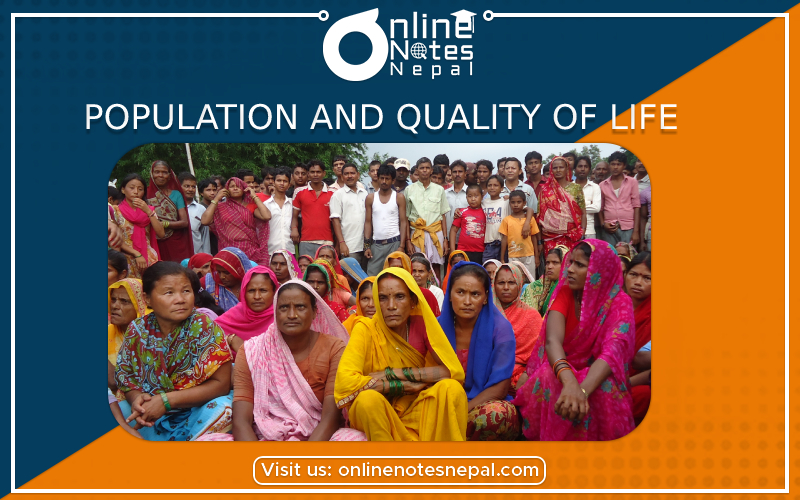Published by: Nuru
Published date: 07 Dec 2021

In this chapter, we discuss about the population and quality of life, their relation between one another, and factors affecting quality life. Reference Notes.
Population is definded as the whole number of people or inhabitants in a country or region. According to the World Health Organization (WHO), quality of life is defined as “the individual’s perception of their position in life in the context of the culture and value systems in which they live and in relation to their goals.” Someone's quality of life is the extent to which their life is comfortable or satisfying.
There is an interrelationship between population and quality of life. There is an adverse effect on the quality of life if the population growth rate is high. The available means and resources become scarce. There is a problem in the population management. The main aim of the population education is to help in the development of quality of life.
By the following factors, quality of life is affected (Factors affecting quality of life):
| Demographic elements (first level) | Social-cultural elements (Second level) | Development process (Third level) | Means and Resources (Fourth level) |
| Size of the population | Social system | Development priorities | Human resources |
| Population growth | Political system | Trade | Natural reosurce |
| Migration | Consuming pattern and Cultural norms & values | International relation | Technology and Capital |
The size of the population, population growth and migration are the first factors of the population that affects the quality of life. The second factors that affect the quality of life are social systems, political system and cultural values. Next factor of development process includes the priority to development, trade and international relations.
The fourth factor is means and resources. It includes human resources, natural resources and technology. The standard of living is related to the income of every individual.
There is an interrelationship between the human wants and quality of life. The quality of life can only be imagined if the standard of education, health, etc. can be maintained. Food, shelter and clothes are essential factors for the human body and health. Food for eating, clothes for body protection and shelter are essential for security.
Status of people according to the census:
According to the census 2068, 4.88 (around 5) people live in a family. Similarly, if the population growth rate is 1.35%, the sex ratio of male and female is 100 is to 94.2. According to the population census 2068, 85.26% Nepali live in their own home whereas 12.81% live in rent. 38.17% of families don’t have latrine service in their homes which affects greatly in the quality of life of people.
Quality of Life:
Quality of life is related to the per capital income of the person. The living standard of people is affected by:
An individual and the family lives in a society. She/he may not be happy only with the fulfillment of their basic and physical needs. Socio-psychological needs are also essential to be fulfilled. He wants to get an education and then gives priority to quality education. He desires to celebrate the festivals celebrated in his community and also wants to involve in the social works. He feels unsatisfied if his desires are not fulfilled. Even though he could be alive, but he becomes unsatisfied in social and psychological way if his wants did not get fulfill.